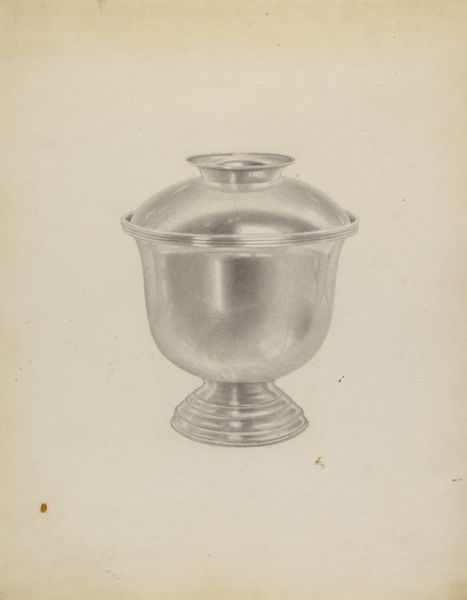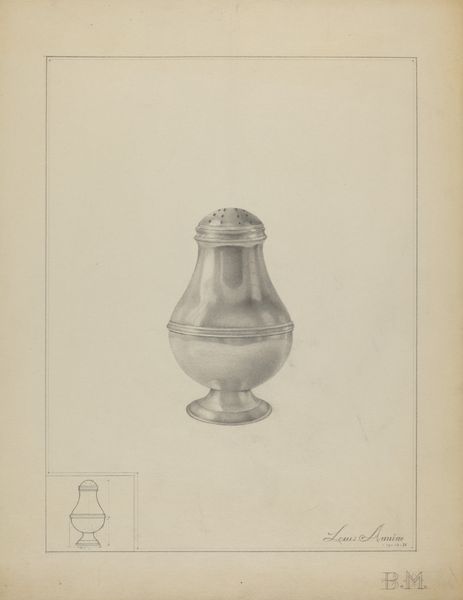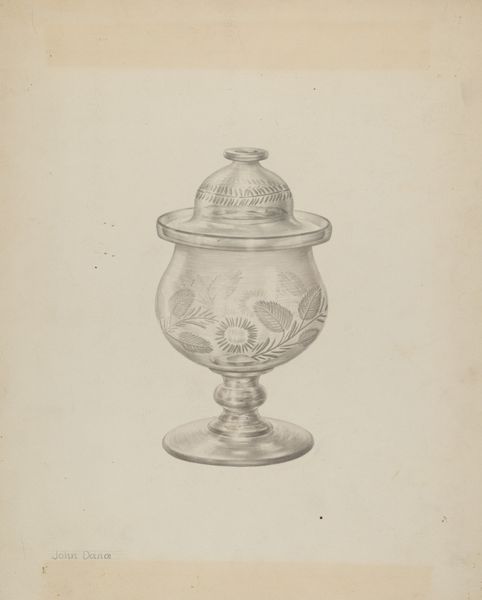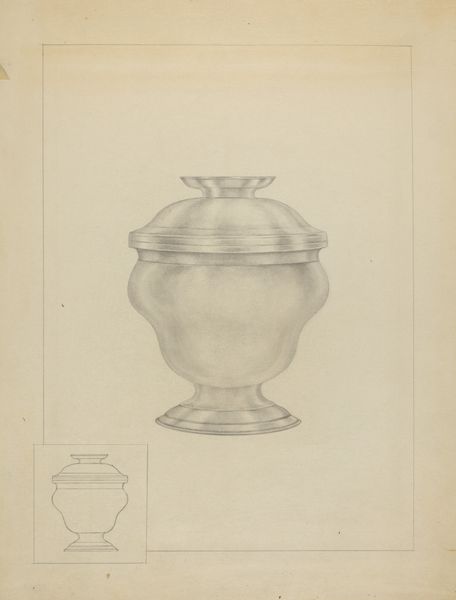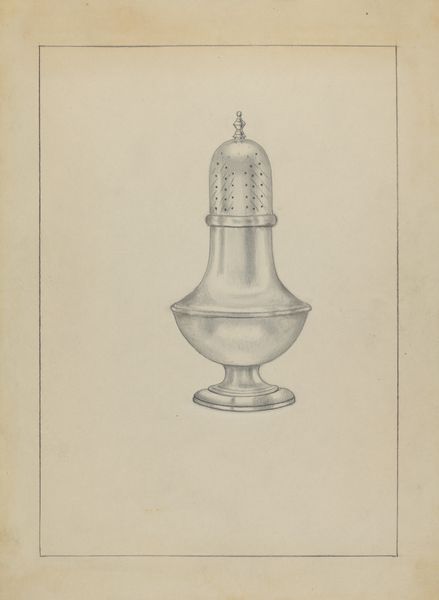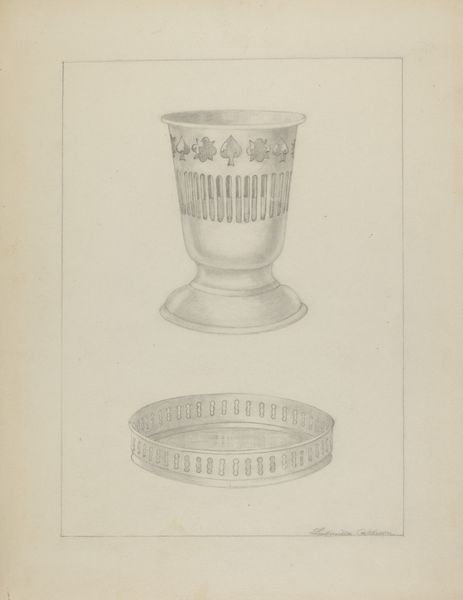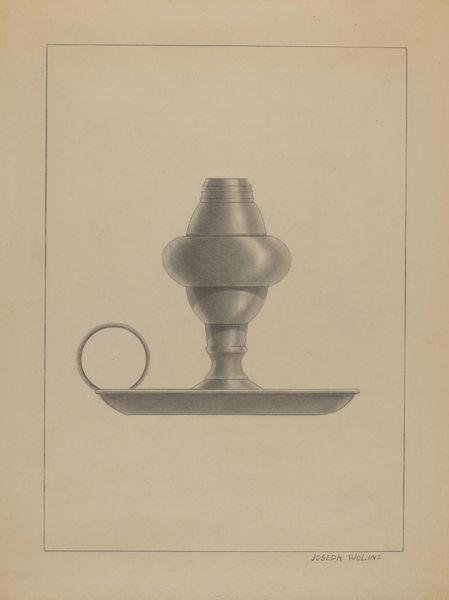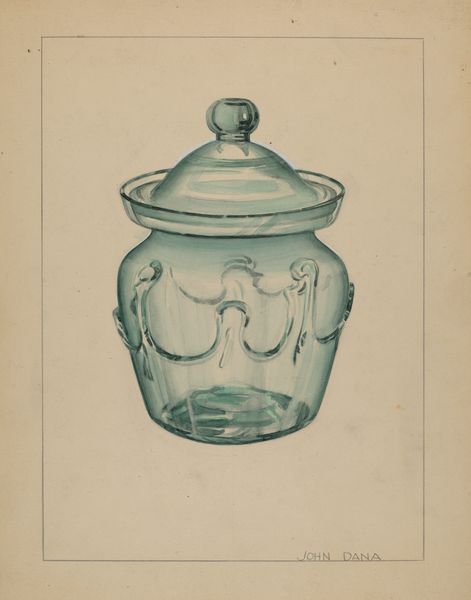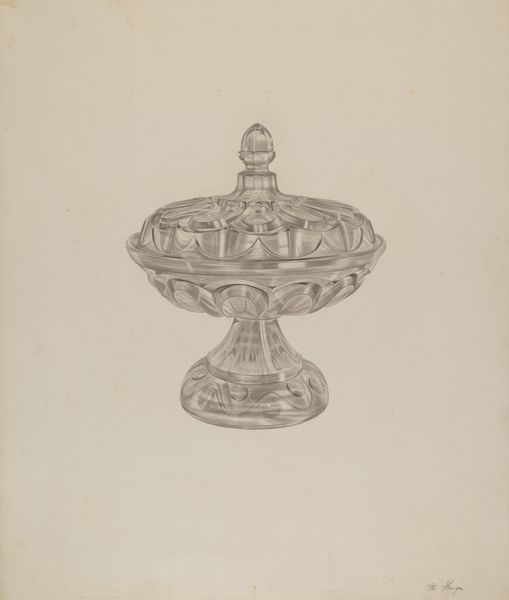
drawing, paper, pencil
#
drawing
#
paper
#
pencil drawing
#
geometric
#
pencil
#
academic-art
Dimensions: overall: 28.8 x 22.9 cm (11 5/16 x 9 in.) Original IAD Object: 5 1/2" high; 4" in diameter
Copyright: National Gallery of Art: CC0 1.0
Curator: A pristine rendering in graphite pencil, this "Silver Sugar Bowl" comes to us from Aaron Fastovsky, created in 1936. Notice the quiet precision of line and form. Editor: It feels almost austere, doesn't it? Despite depicting something potentially ornamental, the tight shading and carefully considered contours create an almost clinical presentation. Is it meant to be decorative, or… documentary? Curator: An excellent observation. The interplay between object and representation is indeed intriguing. The starkness could reflect a broader trend in design of the period – a paring back of excess, even in luxury items. Consider the rise of Bauhaus principles, promoting function over pure ornamentation. Editor: That makes sense in terms of art historical context. Given the 1930s, socio-economic conditions would also naturally influence what sort of domestic scenes were promoted. Was the image used commercially? Was it meant to be aspirational? Curator: Such questions probe the very intention behind the piece. But if we confine ourselves for a moment to the visual experience, let us analyze the technical brilliance in Fastovsky's hand. Observe the soft gradations creating volume and reflective surfaces—a complex array of curves and light. How does it evoke your sense of weight, mass, and dimension through two-dimensional rendering? Editor: The artist is undoubtedly skilled; I agree with your point about Fastovsky’s adept manipulation of light to imply form. However, even granting that technical skill, the object itself feels symbolically weighted; as if the artist were intentionally imbuing it with qualities extending beyond mere craft. Curator: The addition of decorative elements would add another symbolic layer to explore further. The finial is rather interesting... perhaps reflecting a bygone era of aristocratic design. How the composition frames the vessel within rigid edges enhances a certain formality, doesn't it? Editor: Yes, it almost traps the image, intensifying the object's inherent status and isolating it from everyday interaction. By encasing it like this, within boundaries on the sheet and within itself, a formal aesthetic is enhanced—an aesthetic both cold, and highly disciplined. Thank you, this was most enlightening! Curator: Agreed, it is fascinating to consider the intersection between craft, class and the language of formal design, and I also learned a great deal today, thank you.
Comments
No comments
Be the first to comment and join the conversation on the ultimate creative platform.
